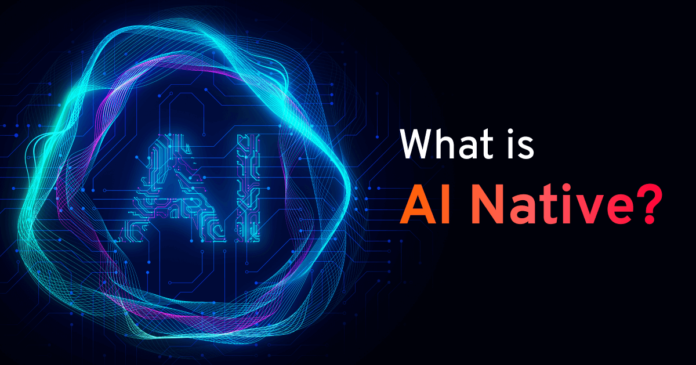(A quick conversation between 𝙈𝙚 and 𝙏𝙚𝙘𝙝 𝙀𝙭𝙥𝙡𝙤𝙧𝙚𝙧 📶)
𝙏𝙚𝙘𝙝 𝙀𝙭𝙥𝙡𝙤𝙧𝙚𝙧 📶: Hey Mohamed, everyone’s throwing around the term AI-Native RAN lately.
Is this just hype, or is something fundamentally changing in the radio network?
𝙈𝙚 (𝙈𝙤𝙝𝙖𝙢𝙚𝙙):
It’s a fair question — and I’ve seen both the buzz and the reality.
Let’s be honest — a lot of people say “AI” when they really mean automation scripts.
But AI-Native RAN is something more strategic.
It’s about designing the RAN with AI in the loop from the start — not just adding AI later.
𝙏𝙚𝙘𝙝 𝙀𝙭𝙥𝙡𝙤𝙧𝙚𝙧 📶: Okay, but practically speaking… how is AI used in RAN today?
𝙈𝙚 (𝙈𝙤𝙝𝙖𝙢𝙚𝙙):
Let me give you a real example.
A few months ago, we were troubleshooting handover failures in a dense urban cluster.
The usual way?
🧑💻 Manual drive tests, spreadsheet exports, hours of engineering.
But with the right data pipeline, AI can learn beam-level KPIs, HO success rates, and user mobility traces.
Then it predicts failures and recommends tuning — even in real time, through the RIC.
That’s not automation — that’s adaptive intelligence.
𝙏𝙚𝙘𝙝 𝙀𝙭𝙥𝙡𝙤𝙧𝙚𝙧 📶: So is this what O-RAN meant by near-RT RIC?
𝙈𝙚 (𝙈𝙤𝙝𝙖𝙢𝙚𝙙):
Exactly.
In the O-RAN architecture, intelligence is layered:
• 🔁 Non-RT RIC (cloud/core): trains AI models, handles long-term learning
• ⚡ Near-RT RIC (CU/edge): applies policies, takes fast decisions (<1s)
• ⚙️ xApps & rApps: plug-in apps for functions like beam optimization, power control, load balancing
The big shift?
📦 Operators can build their own AI logic — no more full black-box from vendors.
𝙏𝙚𝙘𝙝 𝙀𝙭𝙥𝙡𝙤𝙧𝙚𝙧 📶: So is AI-Native RAN just a software upgrade?
𝙈𝙚 (𝙈𝙤𝙝𝙖𝙢𝙚𝙙):
Not at all.
To be truly AI-native, the network must be built with AI hooks and closed loops:
• 🔍 Granular observability — real-time access to PHY/MAC/RLC data
• 🧠 Model integration points — APIs to inject inferences
• ♻️ Closed-loop design — monitor, act, verify, repeat
Even the radios might need upgrades — to support beam KPIs per TRP, predictive scheduling, or uplink analytics for FWA or RedCap use cases.
𝙏𝙚𝙘𝙝 𝙀𝙭𝙥𝙡𝙤𝙧𝙚𝙧 📶: Have you seen AI-Native RAN in the field?
𝙈𝙚 (𝙈𝙤𝙝𝙖𝙢𝙚𝙙):
Yes — and here are real examples:
• 🇰🇷 One MNO in Asia used xApps to cut energy usage by 18% in dense clusters.
• 🇮🇳 Another used ML to predict crowd hotspots, pre-loading beam templates before festivals.
• 🧠 I’ve personally worked with teams on handover prediction & uplink scheduling, using AI-inferred device trajectories.
Before: days of manual tuning.
Now? It learns silently in the background.
𝙏𝙚𝙘𝙝 𝙀𝙭𝙥𝙡𝙤𝙧𝙚𝙧 📶: So what should operators do to get ready?
𝙈𝙚 (𝙈𝙤𝙝𝙖𝙢𝙚𝙙):
Here’s my roadmap:
✅ Start with clean, contextualized RAN data
✅ Deploy a non-RT RIC platform
✅ Build internal ML Ops for telco
✅ Pilot 1–2 xApps — like energy saving or beam selection
And most importantly — move away from closed RANs.
The future is open, intelligent, AI-native.
🎓 Check our online recorded course to learn more about the technology.
Benefit from Massive discount on our 5G Training with 5WorldPro.com
Start your 5G journey and obtain 5G certification
contact us: contact@5GWorldPro.com


